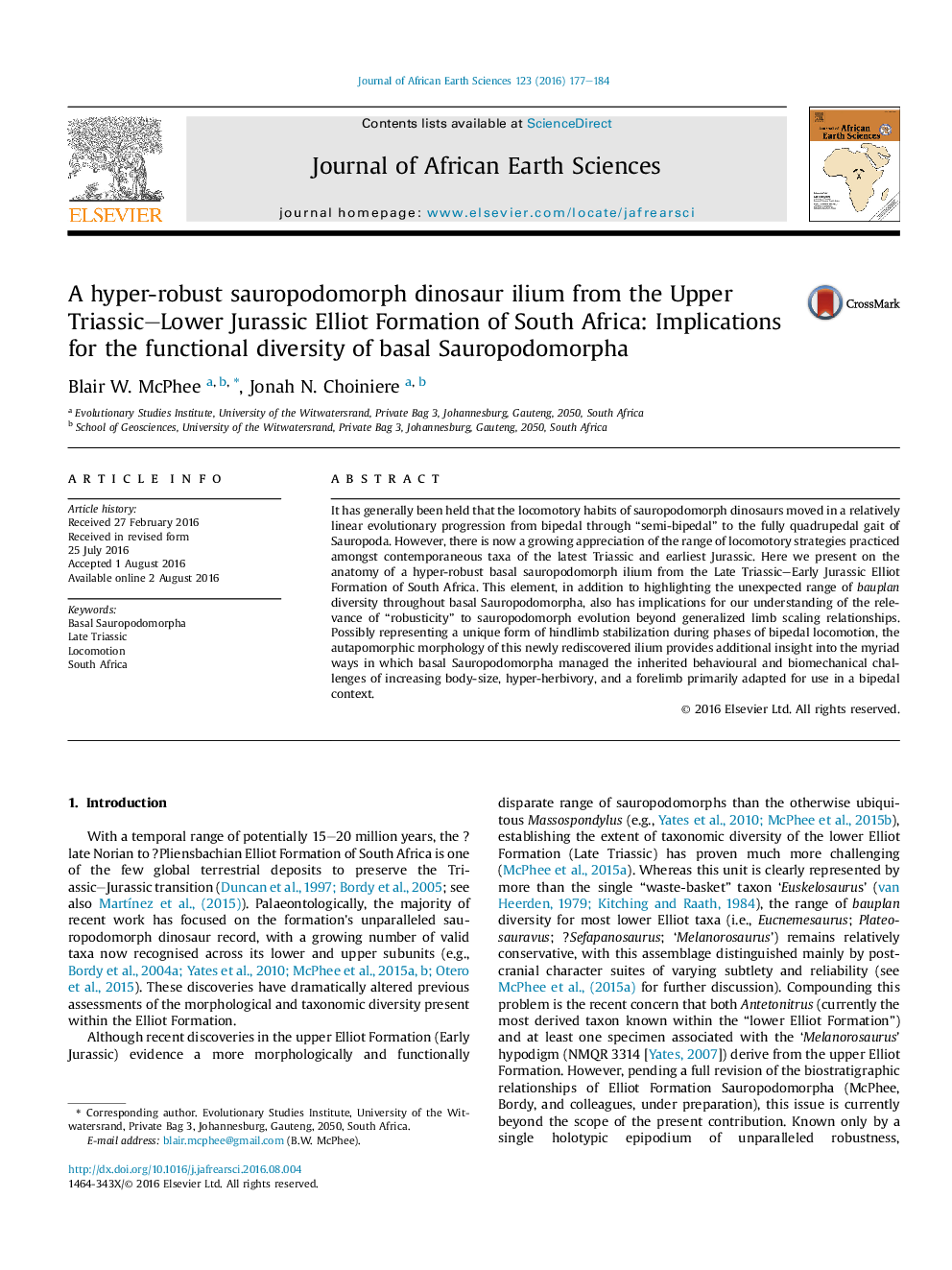| Article ID | Journal | Published Year | Pages | File Type |
|---|---|---|---|---|
| 4728176 | Journal of African Earth Sciences | 2016 | 8 Pages |
•Bauplan diversity is conservative among Late Triassic South African sauropodomorphs.•This specimen evokes a larger range of body plan diversity than previously thought.•Our analysis suggests a novel form of stance-phase hip support related to bipedalism.•Sauropodomorphs evinced a range of biomechanical strategies during the Late Triassic.
It has generally been held that the locomotory habits of sauropodomorph dinosaurs moved in a relatively linear evolutionary progression from bipedal through “semi-bipedal” to the fully quadrupedal gait of Sauropoda. However, there is now a growing appreciation of the range of locomotory strategies practiced amongst contemporaneous taxa of the latest Triassic and earliest Jurassic. Here we present on the anatomy of a hyper-robust basal sauropodomorph ilium from the Late Triassic–Early Jurassic Elliot Formation of South Africa. This element, in addition to highlighting the unexpected range of bauplan diversity throughout basal Sauropodomorpha, also has implications for our understanding of the relevance of “robusticity” to sauropodomorph evolution beyond generalized limb scaling relationships. Possibly representing a unique form of hindlimb stabilization during phases of bipedal locomotion, the autapomorphic morphology of this newly rediscovered ilium provides additional insight into the myriad ways in which basal Sauropodomorpha managed the inherited behavioural and biomechanical challenges of increasing body-size, hyper-herbivory, and a forelimb primarily adapted for use in a bipedal context.
